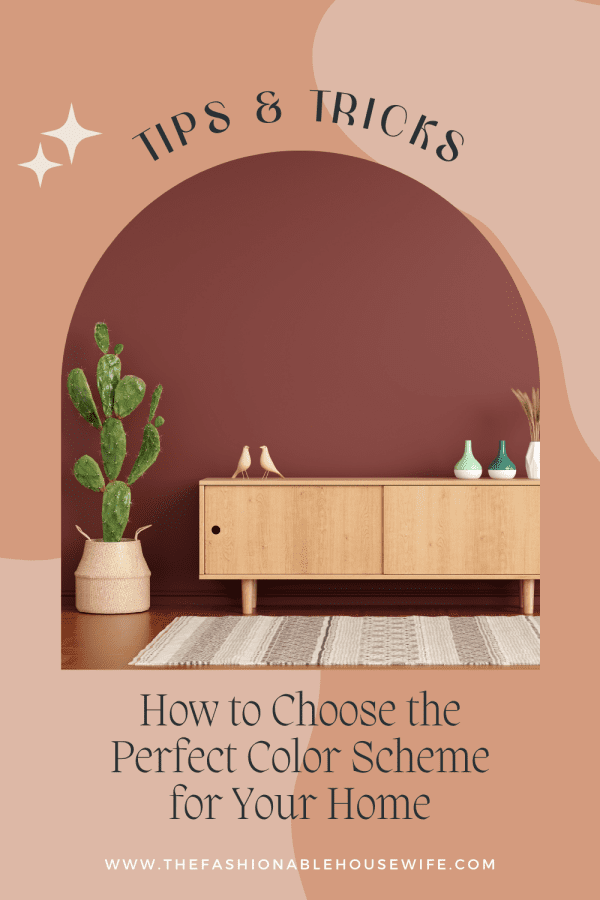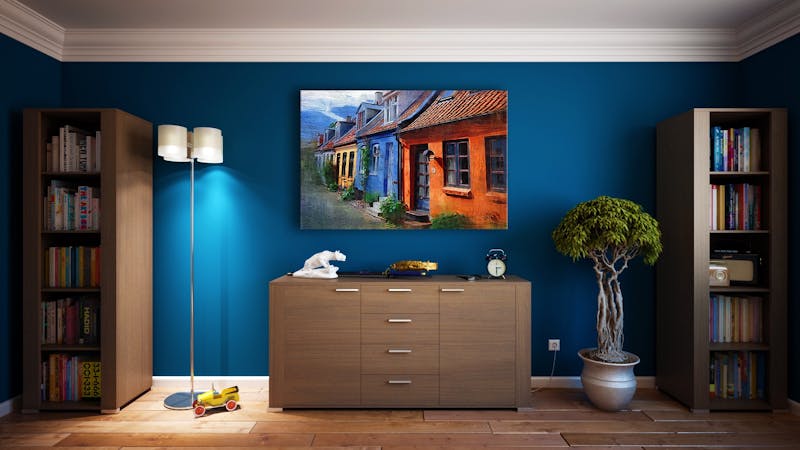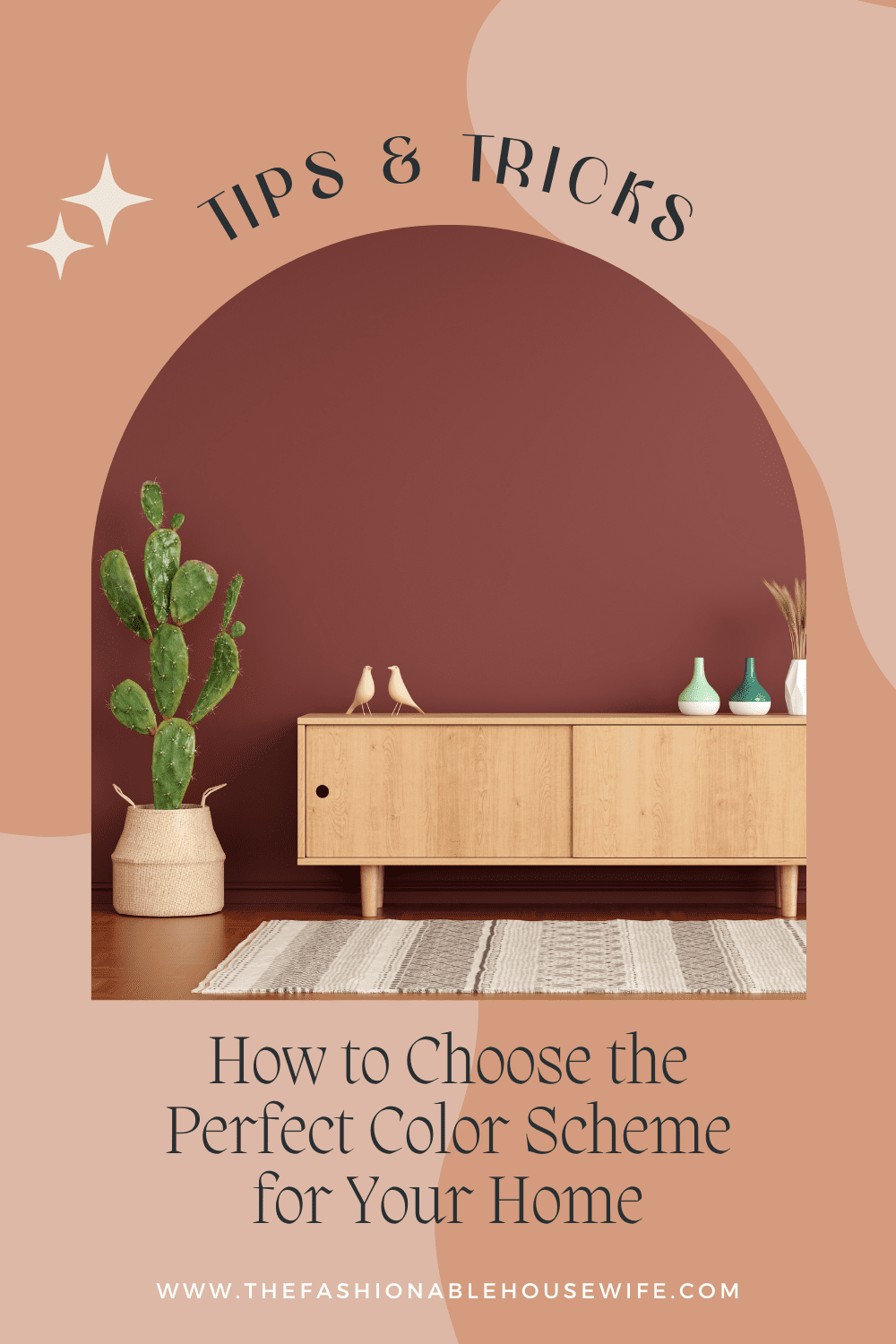How to Choose the Perfect Color Scheme for Your Home

Your home is where you spend a lot of your time. It should be a place where you feel comfortable enough to be yourself. Choosing the right color scheme is crucial for your home’s design and affects its overall look and feel.
This article guides you through selecting a color scheme, considering factors like space size, desired mood, and current design trends.

Understanding Color Theory
Understanding color theory helps in selecting colors. Colors are grouped based on their position on the color wheel:
- Primary Colors: The primary colors are red, blue, and yellow. All the other colors are created by mixing primary colors.
- Secondary Colors: Secondary colors are orange, green, and purple. To get secondary colors, you have to mix two primary colors together.
- Tertiary Colors: Tertiary colors are mixes of primary and secondary colors. colors.
- Complementary Colors: Colors that are positioned opposite each other on the color wheel are referred to as complementary colors. Examples are red and green.
- Analogous Colors: Colors that are next to each other on the color wheel are called analogous colors. Blue and green are a good example of this type of combination.
Factors to Consider When Choosing a Color Scheme
When building a home, there are many things to consider and numerous tasks to complete. It can be quite overwhelming to have to do it all by yourself, and it is good to recruit the services of trusted home builders.
Betenbough homes are built by the best experts in the field who you can trust to work with you to bring your dreams to life. They will be there to guide you in every stage of the construction, right until the point where you have to paint the house.
Even with the aid of trusted experts, there are still some things you need to know.
Here are some factors to consider while choosing the color scheme for your home:
Size and Layout
The size and layout of your space influence color choices. Lighter colors make a room feel larger, while darker colors create a cozy atmosphere. Use lighter colors in small rooms to open up the space and darker colors in larger rooms for warmth.
Desired Mood
Colors set the mood in a room, and you need to think about the kind of mood you want to set in a room before you choose the colors to paint it with.
- Bedrooms: Soft colors like blues and greens can create a calming atmosphere in the bedroom. This is good because the mood in a bedroom should be one that makes you feel comfortable.
- Living Rooms: Warm colors like reds and yellows create an energetic atmosphere. In the living room, you want to feel encouraged and happy because this is where people gather.
- Home Offices: Productive colors like greens and blues promote focus. Work is done in the home office, so you need to set the right mood for optimal productivity.
Trends in Interior Design
While choosing the color scheme for your home, you should consider current trends but also prioritize your home style. Popular trends include:
- Earthy Tones: Earthy tones have made a comeback in design spaces for a while now. These are colors that are inspired by nature like terracotta and sage green. They add a warm, homey feel to any room.
- Bold Colors: Navy blue and emerald green add a vibrant touch. They are bold colors that can be a good accent and add a pop of color to a room as long as you pair them correctly.
Experiment with Combinations
Experiment with different color combinations. Use a color wheel to find complementary or analogous colors. Online tools can also help you visualize combinations if you have trouble imagining them.
Lighting
Lighting affects color appearance. Natural light enhances lighter colors and can wash out darker ones. Choose colors based on the amount of natural light a room receives to get the best results from the colors
Additional Tips
– Maintain cohesion between rooms. You can do this by painting rooms in colors that create a harmonious blend. You can also use complementary colors for a vibrant contrast.
– Use a few colors to achieve your design goals. If you use too many colors, you might end up with a crowded feel. This can lead to chaos.
– Consider fixed elements like flooring and ceilings. You need to make sure that the colors you choose in a room work well together with the colors of the other fixtures in the room.
– Ensure harmonious undertones. Pay special attention to the undertones of the paint you use. If possible, try to stick to either cool or warm undertones all through.
– Don’t be afraid to repaint if needed! It is okay to make mistakes, especially since you are learning on the job.
Conclusion
Choosing the right color scheme impacts your home’s look and feel. As we all know, the color of a room plays a big role in determining the mood and how the room makes you feel.
By considering space size, desired mood, and design trends, you can select a scheme that reflects your style and creates a welcoming environment.

Frequently Asked Questions
How can I use a color wheel to help me choose a color scheme?
A color wheel helps you to find complementary or analogous colors that work well together. Complementary colors create vibrant contrast, while analogous colors create a harmonious blend.
Should I follow the latest color trends when choosing a color scheme?
While trends can inspire, choose colors that reflect your style. Don’t feel pressured to follow trends that don’t resonate with you. You need to also take note of the fact that trends come and go. Therefore, you have to choose a color scheme that you will still love for years to come.
What are some common mistakes to avoid when choosing a color scheme?
Avoid choosing colors solely based on trends without considering existing decor. Don’t overlook the impact of lighting on color appearance. Maintain cohesion and flow between rooms.

